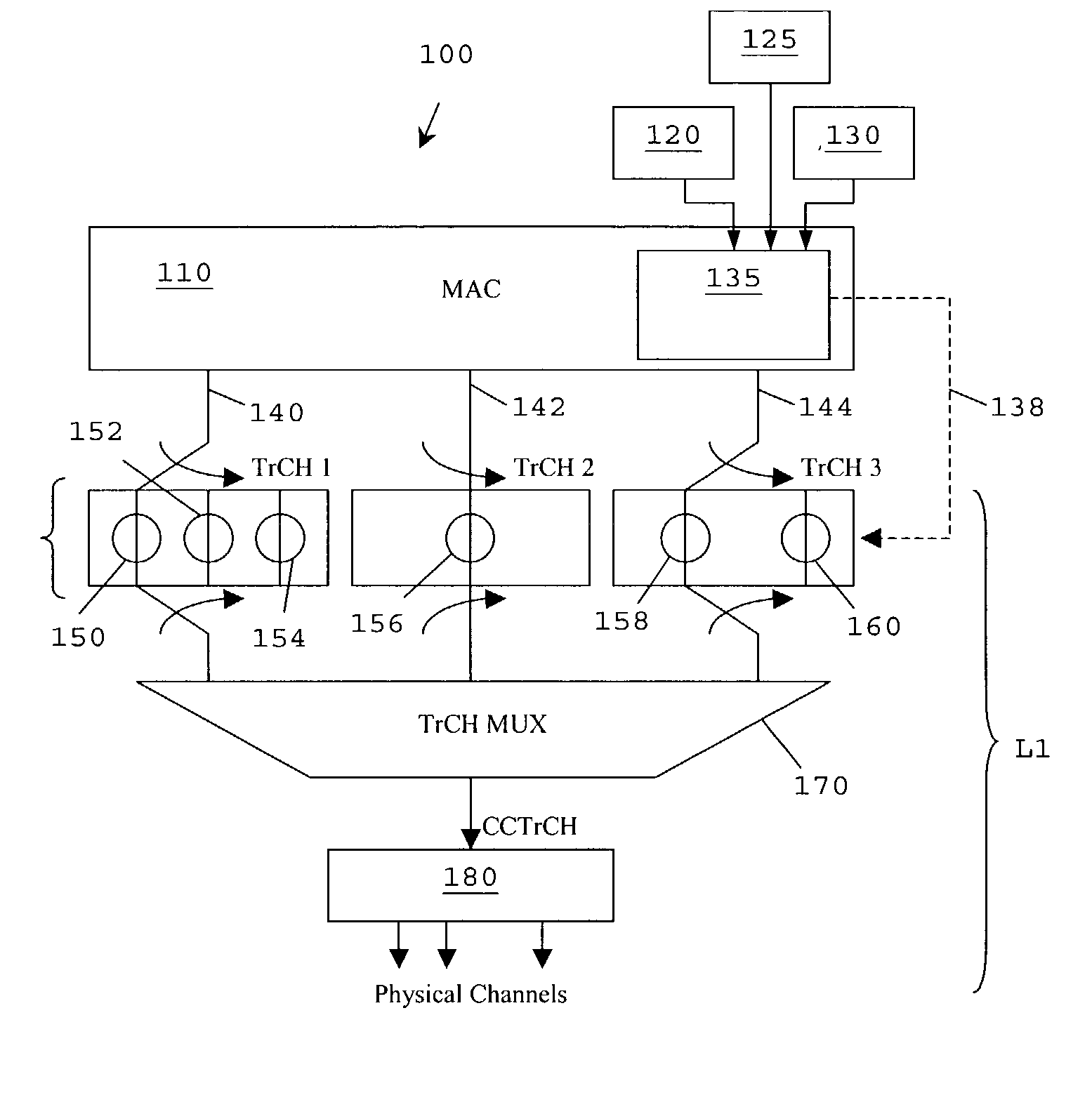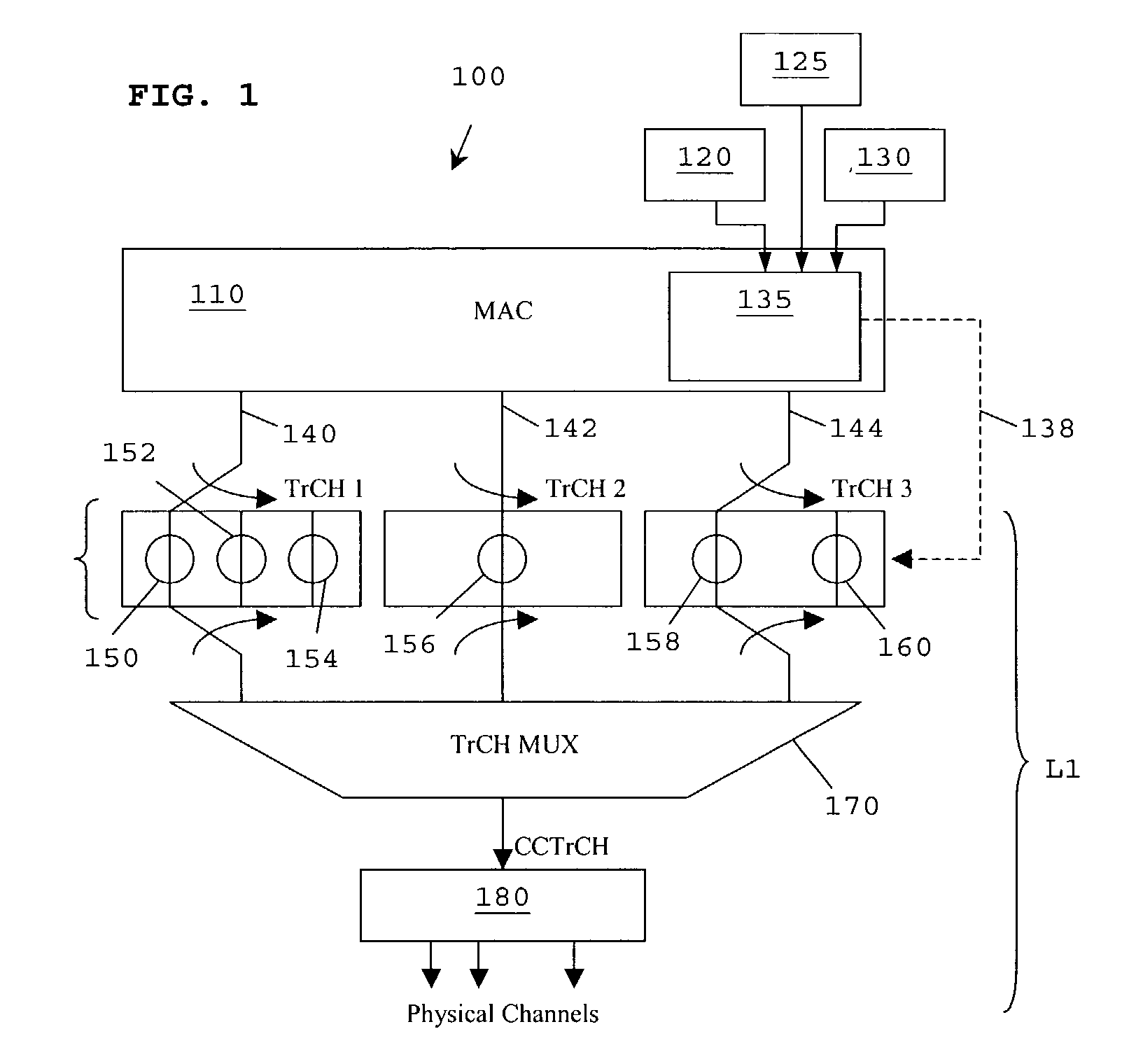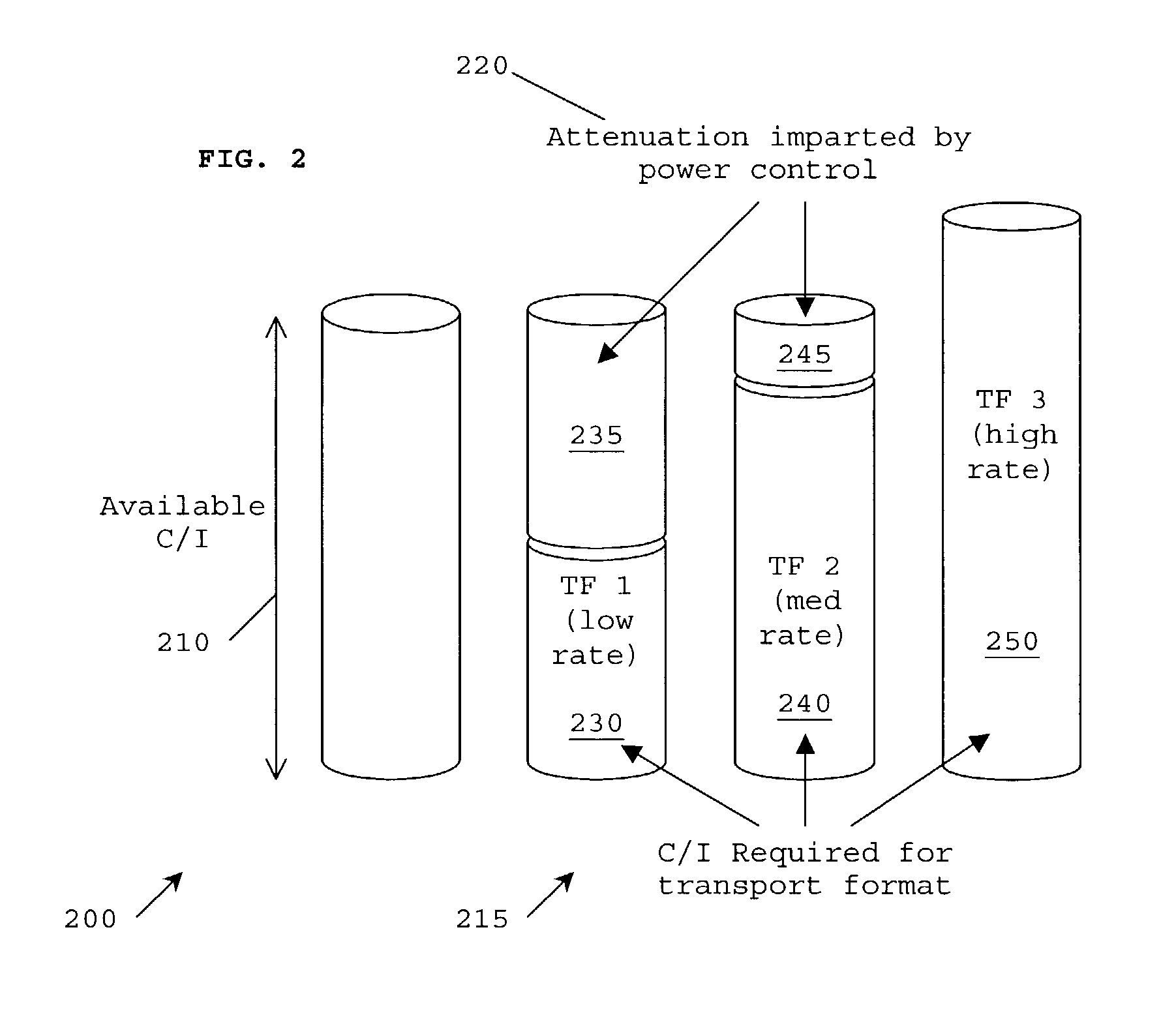Method and arrangement for power control
a power control and power arrangement technology, applied in power management, transmission monitoring, wireless communication, etc., can solve problems such as reducing system capacity, interfering power measurement, and slow dl power control schem
- Summary
- Abstract
- Description
- Claims
- Application Information
AI Technical Summary
Benefits of technology
Problems solved by technology
Method used
Image
Examples
Embodiment Construction
[0088] In summary, the preferred embodiments of the present invention relate to a power control scheme and / or a scheme for modifying a transmission rate for use in downlink-shared channels in a non fast-fading environment. The concept of rate adaptation is used in order to offer the best possible data rate to all users, at any particular moment in time. In particular, RLC-based information from a UE, indicating on a frequent basis a failure rate of packet data transmissions, is used to select a transport format. The transport format is selected to provide a power level window, with power control and / or rate adaptation used to optimise transmission levels within such window(s).
[0089] Hence, as a user equipment moves within a cell, causing the UE's carrier to interference levels to change rapidly, frequent transmission from the UE are used to continually select an optimal transport format, with DL power control and / or rate adaptation used as a fine-tuning process within each transport...
PUM
 Login to View More
Login to View More Abstract
Description
Claims
Application Information
 Login to View More
Login to View More - R&D
- Intellectual Property
- Life Sciences
- Materials
- Tech Scout
- Unparalleled Data Quality
- Higher Quality Content
- 60% Fewer Hallucinations
Browse by: Latest US Patents, China's latest patents, Technical Efficacy Thesaurus, Application Domain, Technology Topic, Popular Technical Reports.
© 2025 PatSnap. All rights reserved.Legal|Privacy policy|Modern Slavery Act Transparency Statement|Sitemap|About US| Contact US: help@patsnap.com



